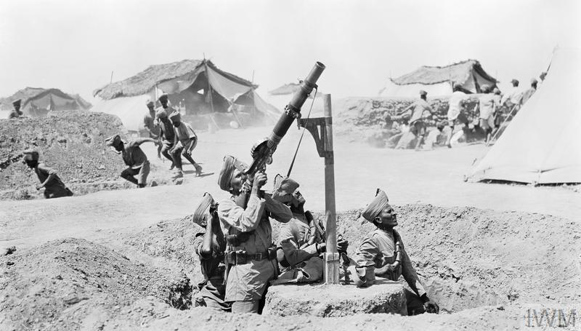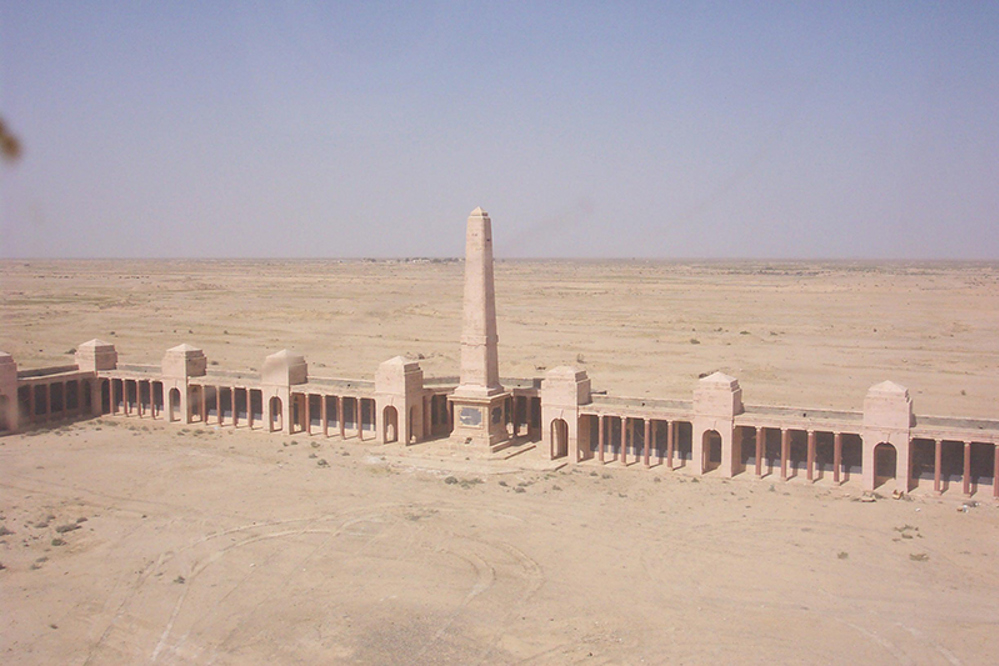02 October 2020
Four Reasons Why Diversity Impacts the Commemoration of BAME Casualties
For Black History Month George Hay, CWGC’s Official Historian, explores some of the ways diversity and equality impacted the Commonwealth War Graves Commission’s commemoration of the war dead from the two World Wars.

Following defeat in France in 1940 and the narrow escape of British forces from Dunkirk, it is often erroneously claimed that Britain stood alone facing Nazi occupied Europe. In truth, at that moment Britain could call on the vast resources and manpower of its empire, just as it had done in the First World War. Whatever we might think about imperialism today or the way in which manpower was raised and used during these wars, it is an unavoidable fact that enormous and essential contributions to the British war effort during both conflicts were made by people from across the globe.
It is the duty of the Commonwealth War Graves Commission to commemorate with equality all those from across the former British Empire who gave their lives in the pursuit of peace in these wars, regardless of where they came from or how they came to serve. Nonetheless, history and particular approaches to commemoration can make the diversity of this sacrifice less obvious. The following four points highlight how and why this can be the case.

1. The most diverse contributions were made outside of Europe
When reflecting on the history of either world war, there is a popular tendency to focus on individual events, and most commonly those that took place in Europe. These lengthy wars are often reduced to singular, defining experiences – perhaps the Battle of the Somme in 1916 or D-Day in 1944. Diverse contributions to both world wars can often be overshadowed by our tendency to treat Europe as the centre of both, because those diverse contributions often had the greatest impact further afield. Be it the losses suffered by the British Indian Army in Mesopotamia from 1914 or those of the African infantry divisions serving in Burma during the Second World War, these contributions are often forgotten despite their significance to the delivery of victory and peace.

2. The structure of the casualty database often hides diversity
As well as cemeteries and memorials, the CWGC maintains a database of more than 1.7 million war dead that allows anyone to search for casualties of the two world wars and retrieve their place of commemoration, among other details. While this search is designed to work with names, units, dates and places of death, it will not allow you to search by gender or race or other, similar criteria because this information was never collected. Just as with the CWGC’s cemeteries and memorials, there are no such distinctions drawn between casualties in a commitment to equality in death. Though this commitment chimes with the founding principles of the Commission, a consequence is that it can make singling out specific groups for other reasons very difficult.

3. There has always been a BAME presence in the British military
While a particular unit might help to suggest or confirm the background of an individual casualty – the British West Indies Regiment, for example – diverse contributions within British units are often overlooked entirely. While the famous footballer-cum-officer of the Middlesex Regiment in the First World War, Walter Tull, is comparatively well known as a man of African Caribbean decent, many others go unnoticed. The service of paratrooper Sergeant Sidney Cornell, for example, has received much less attention. Cornell’s father was African American although he had grown up in Hampshire. He would jump into France in June 1944 and fight with distinction all the way to Germany where he was killed in a river crossing in April 1945. There are likely to be many more examples.

4. Different forms of commemoration
Despite the mentioned commitment to equality in commemoration, conditions, circumstances and available information led to variations in the Commission’s approach to commemoration in the past. Though memorials on the Western Front invariably name the missing on their structure, this was not the case everywhere. A product of the speed in which it needed to be built and the perceived inaccuracy of the names provided by the British Indian authorities, the Basra Memorial does not include the names of Indian non-commissioned officers and men, instead listing the number killed. Although the names are held in registers they have never been on the memorial.
Other examples, including those built in East Africa, commemorate people whose names the Commission does not appear to have ever had, at least not in their entirety. Although these memorials are dedicated to the sacrifices made by these people, the fact that their names are largely unknown means they cannot be searched on the database either. The Commission is currently working on a project to improve our understanding of these casualties and to seek out their names where it is possible.


